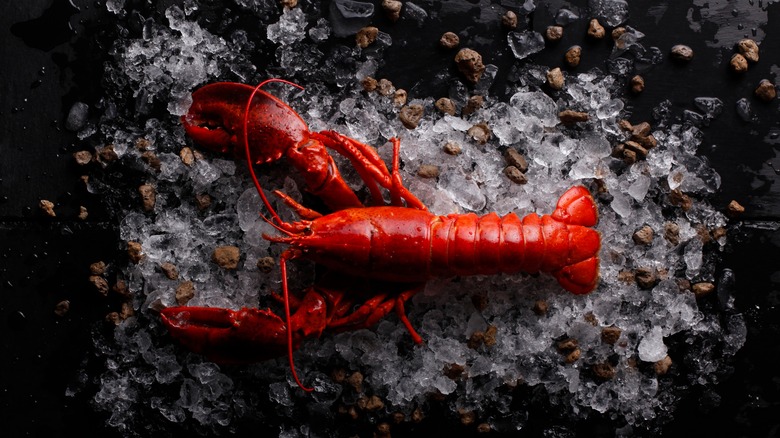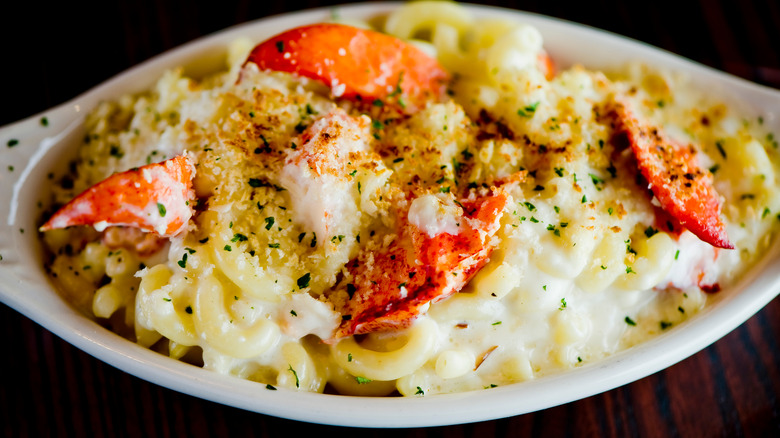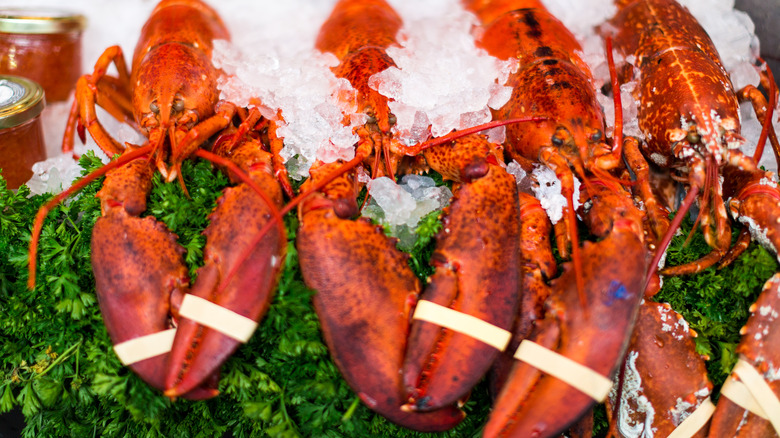The Wasteful Mistake We All Make With Lobster
Lobster is revered as a decadent treat. Maybe that reverence is, in a counter-intuitive way, why home cooks are so much more likely to discard parts that could be used for flavor building when the meat is gone. The sweet, succulent meat is the prize, and the shell is often just seen as an annoying lockbox to break into and leave behind once emptied. And it shouldn't be — the shells can be just as valuable. If you're throwing lobster shells away, you're making one of the top kitchen mistakes and leaving flavor on the table (or in the trash).
Just as you would use vegetable scraps to make a vegetable broth or beef bones to make a beef stock, lobster shells can be used to make a lobster stock because there is so much flavor left in them. These often-discarded pieces should be mined for everything they have, giving depth to dishes beyond (or even without) the meat itself. Soup is always a great way to stretch the "scrap" ingredients from a meal, but it's not the only option; there are other ways to use the leftover shells that add richness to your food.
What can you do with lobster shells?
The obvious answer for anyone who makes their own stock is, of course, to make lobster stock with the shells. You can then make a lobster bisque, seafood stew, or splash a little stock in as you cook.
But there are other genius ways to use leftover lobster shells. James Beard Award-winning cookbook author James Peterson noted in a blog post that many of the flavonoids in lobster shells are fat soluble. If you're buttering a roll for a lobster roll, why wouldn't you infuse that butter with lobster flavor? Making an infused butter and then turning it into a compound butter with lemon, herbs, and garlic is an instant appetizer slathered on toast points. Infusing oil with lobster shells is another way to bring lobster flavor to a dish.
Imagine layering flavor into a lobster risotto by toasting the arborio rice in lobster oil or butter, ladling in lobster stock, and then finishing it by adding in pieces of lobster meat. It might be the best seafood risotto you've ever made. Or infuse milk or cream with lobster shells before building the cheese sauce for a lobster mac and cheese or pasta in a seafood cream sauce. Simmer lobster shells in coconut milk before making a seafood curry. Get creative and layer your flavor like a pro.
Understand the shell to maximize the flavor
Just like with chicken or beef bones, you have a choice to make with lobster shells: To roast or not to roast? (And truthfully, it doesn't have to be an oven-roasting process so much as a browning process.) Browning the shells will impart a complex flavor and a slightly darker color; not browning them will leave the stock with a lighter flavor.
The shell of a lobster is composed of proteins, minerals, and carotenoids. It is also 75% chitin, a polysaccharide (complex amino sugar molecule). When exposed to high heat, protein molecules and sugar undergo a browning process called the Maillard reaction. This is what creates the delicious, savory color-deepened crust on seared meat, the browning of bread crusts, and what coaxes sweetness out of roasted vegetables. Taking dry shells, rubbing them with a bit of oil, and pan-frying or roasting them at a high temperature until they deepen in color will unlock complex flavors you can then use to build complex dishes.
If you're not up for a big kitchen project all at once, you can do it in stages. Cook your lobster to eat it that night, then put the shells in a freezer bag and store. Next time you have the oven running, brown them and throw them back into the freezer. Then use them to make stock, lobster butter, lobster oil, lobster cream, or whatever you plan on cooking with. Just don't throw them out until you extract all their flavor.


